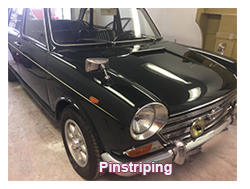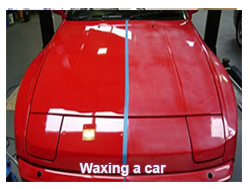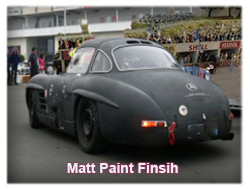 INTEGRAL COLOUR ANODISING: Describes an anodising process in which a paint colour is produced by using special electrolytes.
INTEGRAL COLOUR ANODISING: Describes an anodising process in which a paint colour is produced by using special electrolytes.
INTERMEDIATE COAT:
LOW ZINC TECHNOLOGY: Describes a recently introduced technology used in phosphating processes.
MARBLING: Describes a special decorative painting effect applied using rotating brushes.
MASS TONE: Describes the tone of a paint as it appears from the colour code on the paint can that is required to formulate the paint tone ingredients.
MATT: Describes a dull paint finish.
MIST COAT: Describes what is usually the final coat in a full paint job caused by over-reducing the paint with a slow evaporating thinner allowing for a more accurate blend in the overlap areas.
MOTTLING: Describes the non-uniform appearance of metallic paint, characterised by small, irregular areas darker in colour, caused by the flakes flowing together.
ONE-COAT FINISH: Describes a paint job consisting of a single coat of paint.
ORIGINAL FINISH: Describes the paint applied to vehicle when originally produced by the manufacturer.
OVERLAP: Describes the part of the spray band that covers the previous application of paint with a 50% overlap on each stroke being the generally recommended point.
OVERLAY PAINT: Describes a special type of custom paint job where a design is embedded on the painted surface below a coat of translucent paint, giving the impression that two paints have been applied to the car.
OXIDATION: Describes one of the processes by which enamel paint cures, through combining oxygen in the air with the paint film, which allows the paint to dry and continues to harden the enamel for several weeks.
PAINT COLOUR MATCHING: Describes the process of determining an accurate paint shade using colour charts and mixing devices.
PAINT FILM: Describes the actual thickness of the paint on a surface.
PARTIAL RESPRAY: Describes a situation where only certain panels on a vehicle’s bodywork requires a respray with appropriate cost savings.
PINSTRIPE: Describes the thin, precisely contoured lines usually hand painted along certain body features that may extend along the entire length of a vehicle car characterised by its elaborate designs.
RESPRAY: Describes the procedure of adding one or more coats of paint to a vehicle’s existing finish.
SANDBLASTING: Describes cleaning a surface with a jet of grit using air or steam pressure.
SINGLE COAT: Describes a single coat of paint, with each stroke overlapping the previous stroke by 50%.
SOFT PAINT: Describes a form of paint fault where the surface is marked easily even after full drying, apparently caused by an insufficient quantity of catalyst being added to the paint.
SOLID PAINT: Describes a single, non-metallic colour paint job.
SPOTTING IN: Describes the skill of paint respraying in very restricted areas.
SPRAY COATING: Describes method for applying chemical conversion coatings.
SPRAYING VISCOSITY: Describes the ideal levels of viscosity required to make paint suitable for spraying,
SPECULAR GLOSS FINISH: Describes a mirror-like paint finish characterised by its high reflectivity.
STOVING: Describes the process of curing a paint coating through applying heat.
TACK CLOTH: Describes a special material used to wipe sanded panels prior to spraying in order to remove the most minute dust particles and other foreign substances from the panel surface.
TACK RAG: Describes a piece of cloth impregnated with a non-drying varnish used to pick up dust and dirt particles.
TINT TONE: Describes a paint shade produced when a small amount of colour is mixed with a large amount of white to formulate the ingredients of a certain paint tone.
TOP COAT: Describes the final coat in any paint job.
UNDERCOATING: Describes the simple oxide paint sprayed on the underside of the vehicle, designed to deaden sound and prevent the formation of rust.
WAXING: Describes the application of a wax finish on a paint surface to preserve the paint and maintain its beauty.
WET-ON-WET APPLICATION: Describes a form of paint application in which a second coat of paint is applied before the first coat has had time to dry. Particularly popular in metallic paint systems, where a clear coat is applied over a wet base coat to create a high gloss finish.
WET SANDING:
ZINC SPRAYING: Describes a process used to apply zinc coatings to iron or steel in which particles of molten zinc usually in the form of wire is sprayed on a metal surface to be coated. The molten metal is atomized by compressed air and precipitated on the surface to be coated at high velocity.
 Describes any coat of paint applied between the first coat (primer) and the final coat (finish).
Describes any coat of paint applied between the first coat (primer) and the final coat (finish).  Describes the procedure of hand sanding, commonly used for final sanding, where wet-and-dry sandpaper that has been soaked in water to prevent the paper from clogging is used.
Describes the procedure of hand sanding, commonly used for final sanding, where wet-and-dry sandpaper that has been soaked in water to prevent the paper from clogging is used.


